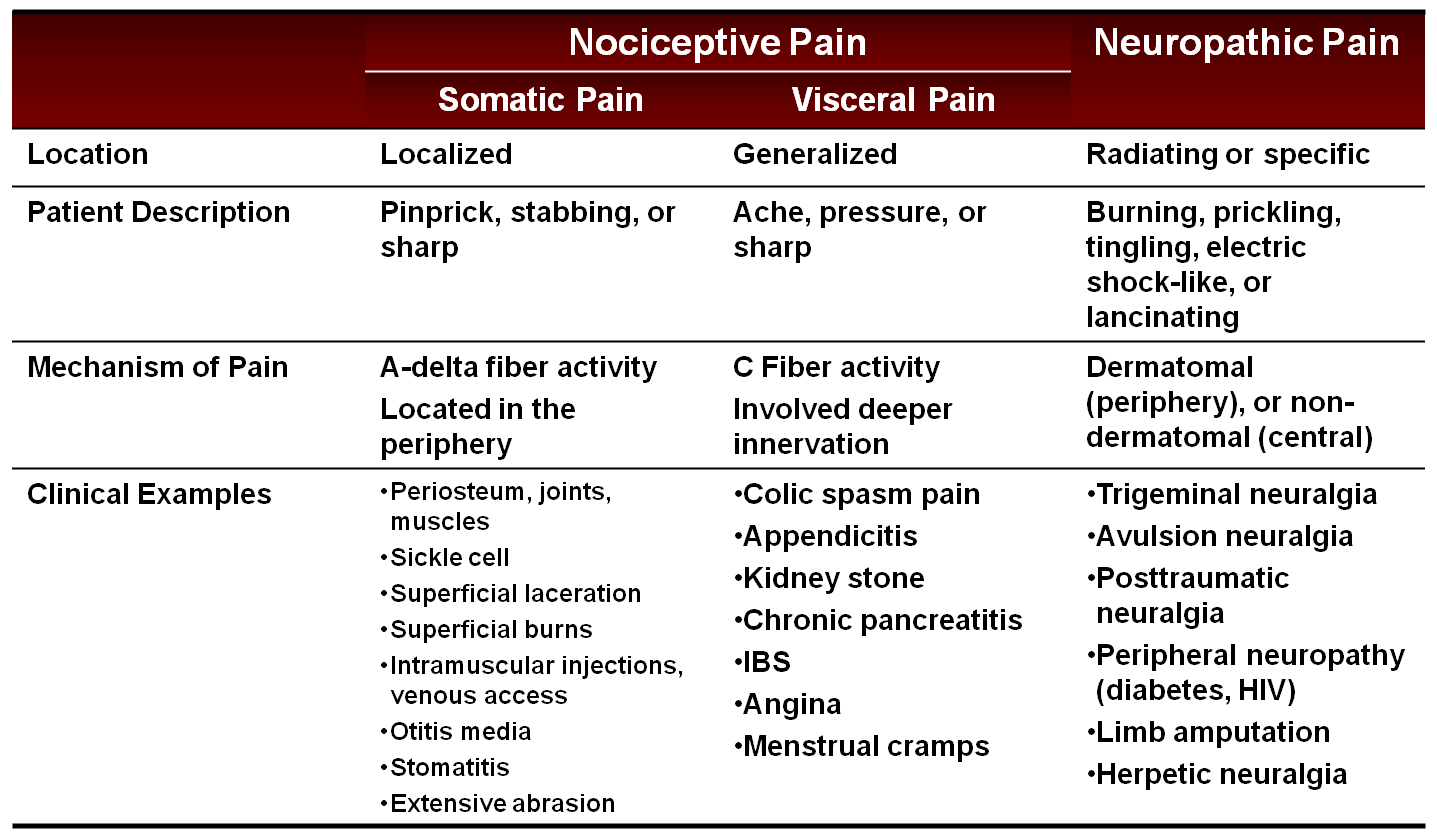
|

|
|
About Initiative
Accreditation Faculty Workshops Point of Care Webcast on Demand Live webcast Outcomes Jointly sponsored by University of Kentucky College of Pharmacy and Vemco MedEd  This activity is supported by an educational grant from Janssen Pharmaceuticals, Inc., administered by Janssen Scientific Affairs, LLC 
|
The online tutorial series with a case reinforces practical
application of tools and competencies acquired during the
live activity. Each tool is a combination of essentials in
clinical practice, links to relevant scientific publications, and
printable handout material for reference. Clinical Case
following the online tutorials gives the learners an opportunity
to earn extra CE credit upon completion.
Differentiating Types of Pain
When evaluating a patient with chronic pain, it is essential
to recognize the type of pain the patient is experiencing. This
will be critical in developing an effective pain management plan
that is individualized to treat the specific type of pain.
General Pain Types Characteristics of Different Pain Types 
Suggested Reading:
|
Home About Us What We Do CME Portal Register for Programs Outcomes Reports Contact Us | Legal | Privacy Statement |